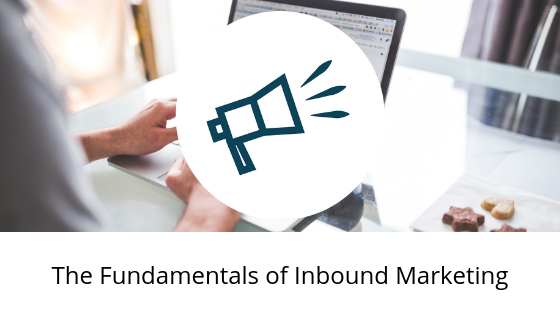Interruptive marketing, commonly known as outbound marketing, is a way of the past. Consumer buying habits have drastically changed since the introduction of the internet; information is readily available at consumers’ fingertips, and they no longer need an in-your-face advertisement to learn about a product or service. At this point, that type of advertisement is easily ignored and forgotten, so smart marketers had to learn to adapt this change. How do marketers get their message out, while still resonating with customers? Inbound marketing.
What is inbound marketing?
Coined by our friends at Hubspot, the inbound methodology is the best way to turn strangers into customers and promoters of your business. Inbound marketing targets the right people, in the right place, at the right time. This type of marketing is focused on attracting customers through relevant and educational content at every stage of the buyer’s journey (more on this to come). Through inbound marketing, potential customers find you through channels like blogs, search engines, and social media. The content provided by inbound marketers should help solve customer issues and problems. As you’ll see, inbound marketing is excellent for building trust and credibility for your business.
Benefits for your business
Today, a majority of people own smartphones, go on social media, and use a computer on a daily basis. According to Retailing Today, 81 percent of shoppers conduct online research before making big purchases. With this knowledge, inbound marketing already seems like a no-brainer, every business should be using. Need more proof? Inbound marketing is extremely advantageous for small businesses due to the level playing field of the internet. Big and small businesses alike are fighting for customers’ attention online, and the winner is usually the one with the most helpful information, not necessarily the business with the largest budget.
Compared to traditional marketing, inbound marketing is much more affordable. You can produce as much or as little content as you’d like, making it adaptable to any budget. With inbound marketing, you’ll build better relationships with your customers and gain qualified leads that are ready to buy. The helpful content you put out builds the initial trust and the customers will keep coming back for more.
Fundamentals of Inbound Marketing
So you’re on board with the whole idea of inbound marketing, but where do you start? Start with defining your ideal customers. Not everyone is going to want your product or service, so you shouldn’t be trying to market to everyone. Figuring out who your target audience is can be as simple as getting to know your current customers, what they do for a living, what motivates them, what their challenges are, what their personal background is, and anything to help you understand who is buying your product or service. From there, you’ll be able to build fictional ideal customers, also known as buyer personas. When building buyer personas, it’s very important to do research and not make assumptions about your customers. The best results of inbound marketing will come from knowing who your customers are!
Now that you have your personas, let’s take a look at the buyer’s journey. The buyer’s journey is the process buyers go through to become aware of, evaluate, and purchase a new product or service.
With inbound marketing, you’ll have potential customers from every stage of the buyer’s journey interacting with your business, and you should be providing unique, relevant content for each stage.
Awareness Stage: the buyer realizes they have a problem.
Consideration Stage: the buyer defines their problem and begins to research options to solve it.
Decision Stage: the buyer chooses a solution.
The easiest way to distribute content for each stage is through blogging. Small businesses with blogs get 126 percent more lead growth than businesses without. In all content you create, keep in mind what stage of the buyer’s journey you’re reaching. In blogs, it is simple to address a problem or issue a potential customer could be having, offer solutions, and down the road (at the decision stage) offer your product or service as a solution. The most important tips for blogs: keep them educational, build trust, and don’t sell yourself right away. Obviously every business wants to sell their product or service, and it can be tempting to do so laced through your blog, but it’s important to follow the buyer’s journey and keep it educational to further build trust.
Four Phases of the Inbound Methodology
The inbound methodology has been proven to grow your business through four phases: attract, convert, close, and delight. Through these phases, strangers become customers and then promoters for your brand, and the cycle repeats as more and more people learn about your business.
Attract
At this point, you should be equipped with your buyer personas, so you have an idea of who you’re trying to attract in this first phase. So how do you do it? With relevant content at the right time! This can be achieved through search engine optimization (SEO), blogging, and social media. By optimizing your website with SEO, your web pages and blogs can rank higher in search engine results, giving you more visibility and attracting potential customers!
As we’ve mentioned, blogging is important because inbound marketing begins with remarkable content. You’ll attract customers with educational content that speaks to them and answers their questions. Next, you’ll leverage that content with social media. Social media is also excellent for engaging with potential customers, aiding in humanizing your brand. Furthermore, it’s important that you’re speaking to potential customers where they are going to hear it. If your customers aren’t using Twitter, it’s probably not going to be beneficial to share content on Twitter!
Convert
Now that you’ve attracted visitors, it’s time to convert those visitors into leads. Do this by opening up a conversation with them. Answer questions for them and provide valuable content and continue the conversation in that fashion. Some of the best ways to communicate with visitors include forms, meetings, messages, and CRM.
Converting a visitor into a lead:
-
Use website forms. Forms are the easiest way to get a visitor’s information and turn them into a lead. With forms, it is helpful to continually optimize them, making this step of the conversion process as easy as possible for the visitor.
-
Plan a meeting. Meetings help give a face or voice to a business. Meeting in person or talking on the phone is one of the best ways to win a new deal and strengthen a relationship. You should make it simple for visitors to book a meeting, so there is no back and forth.
-
Add a messaging feature to your website. A live chat feature can be extremely beneficial if visitors have questions or concerns. Plus, it’s an easy way to engage with them while they’re on your website.
-
Use CRM (customer relationship management). By using a CRM tool, it is simple to keep track of the leads that you’re converting. A CRM is a centralized contact database that lays out all of your interactions with prospects while also helping to optimize future interactions to be more effective.
Close
It’s time for those leads to be transformed into customers. You can do this by pipeline management, lead nurturing, and email. Pipeline management ties in with the CRM, so it’s simple to tell what marketing efforts are bringing in the most leads and if your sales team is effective in closing the leads.
It seems backward, but your sales team should also be using ideas from inbound marketing for closing deals. Cold calling and static pitches are no longer effective. Your sales department should be tailoring their messages to the individual prospects based on what stage they’re on in the buyer’s journey. Each lead you acquire has to be nurtured according to their interests and where they are at in the buyer’s journey. Lead nurturing involves continuing to provide relevant content based on data, such as web pages the lead has visited, content they’ve read, and white papers they’ve downloaded. These things will help move your leads through their journey until they’re ready to buy.
Last but not least, email marketing is still relevant and can be very effective when sent to the right people at the right time. After a lead has completed a call-to-action, filled out a form, and downloaded your whitepaper, they may not be ready to become a customer just yet; that’s where email marketing comes in. A series of emails focused on useful, relevant content can build trust with a lead and help them become more ready to buy.
Delight
Providing a remarkable brand experience for your customers is the inbound way. At this point, they have already bought your product or service and are expecting even more out of the relationship than ever before. In this phase, it’s important to continue the relationship and communication to delight your customers. By keeping the relationship alive, your customers will be likely to buy more, refer your business to their friends, and promote your business! Create customer delight by following the Four Pillars of Customer Delight:
-
Solve problems
-
Be helpful
-
Achieve goals
-
Be enthusiastic
Inbound marketing for your business isn’t going to happen overnight. It’s going to take time and consideration to begin building stellar content and increasing leads. Want to learn more about inbound marketing? Gain a deeper understanding in our free Marketing 101 webinar! By the end, you’ll be on your way to starting inbound marketing for your business. Plus, you’ll receive a few takeaways to help get you started! Register today: https://goo.gl/qvoAV2
Listen to our Inbound 101 podcast to dive even deeper into inbound marketing.


Recent Comments